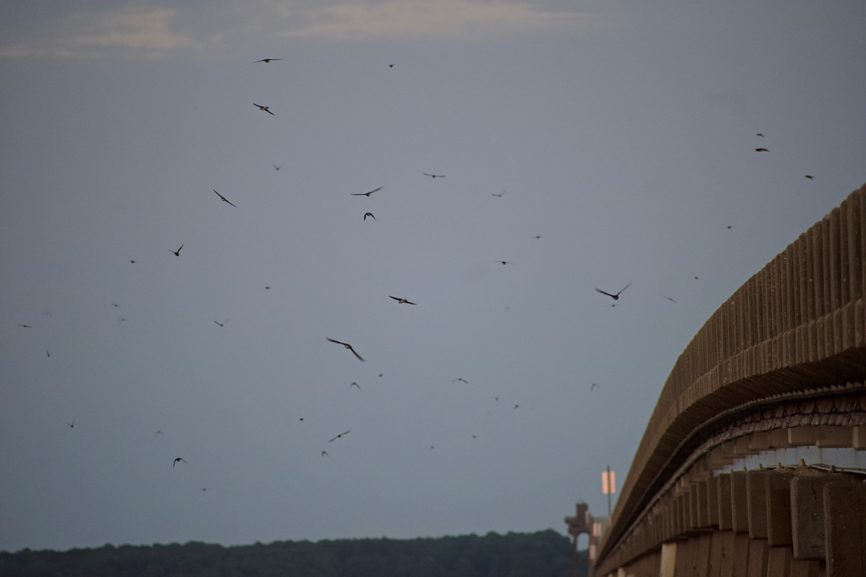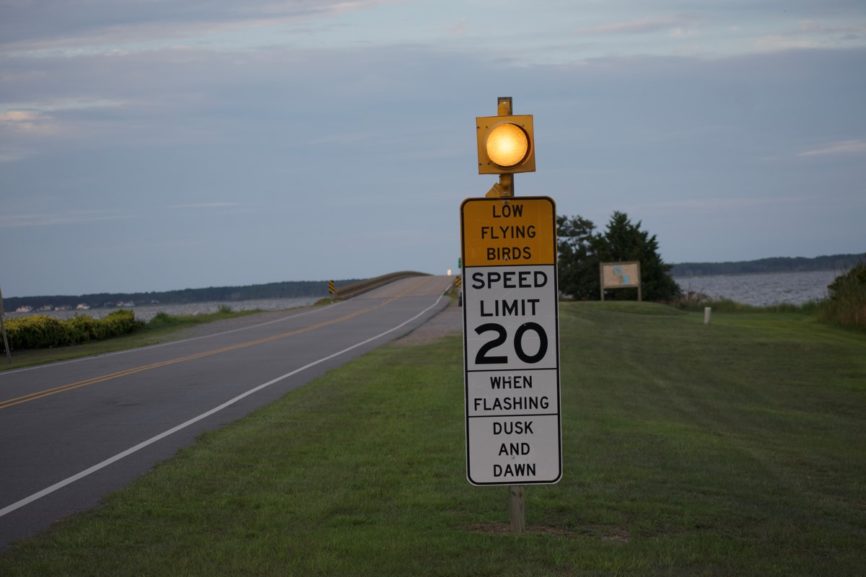Purple Martins of the Outer Banks
Discovering the North American Swallows of the Outer Banks.
The purple martins of the Willam Umstead Bridge have returned once again. They are, perhaps, the equivalent of the swallows of San Juan Capistrano, the famous birds that return to the California missionary to roost every year.
It makes a certain amount of sense because purple martins are a swallow—the largest North American swallow. And, like their west coast cousins, they are highly migratory bird that returns every year to their favorite nesting site.
The journey to the Outer Banks is a long one, originating in Brazil and the northern countries of South America. Although the migratory patterns were suspected, it was not until the recently that satellite tracking showed conclusively that was what was happening. And there is still a lot of research to do. Simply discovering the migratory patterns took years of investigation. What is still unclear, though, is whether the same birds return to the same nesting sites every year.

The William Umstead Bridge is the old US 64 bridge on the north end of Roanoke Island. Opened in 1955, after 60 years the purple martins have had plenty of time to acclimate themselves to their home—acclimate so well that every year more than 100,000 make the bridge their summer home. Because of that, since 2007, NCDOT has reduced the speed limit on the bridge to 20mph during the summer.
Purple martins are an amazing species of swallow. They are not truly purple, rather a dark blue-black with an iridescent sheen. In a certain light, their color may look different, at times appearing to be bright blue, navy blue, green and sometimes a rich deep purple.
Watching purple martins in flight is like watching an aerial acrobatic show and race rolled into one. Incredibly agile, they can fly as fast as 40 mph, diving from 100’ to 150’ to skim the water, take a sip, then lift into the air again.
Their diet is insects— moths, gnats, flies, mosquitoes—although they do not eat as many mosquitos as their reputation seems to attribute to them. Feeding primarily between 100-150’ martins fly higher than most mosquitos fly.
However, the purple martin appetite for insects is probably why their first manmade habitat was dried gourds that Native Americans hung around their crop fields.
When European settlers arrived they continued that tradition. Even today, purple martin homes are common backyard sights, although pest control is no longer their primary purpose.
Why do so many purple martins call the Umstead Bridge home?

In the wild, without any hanging gourds or backyard martin hotels, they are a colonial species, meaning they gather in large flocks or colonies. Although the 100,000 martins believed to call the bridge home is larger than normal, it is not unheard of. Colonies as large as 700,000 have been recorded.
Their nesting habits are still somewhat of a mystery but some things have been learned. Females choose their mate based on the nest location the male finds. It is uncommon but not rare for two females to inhabit the same nest. Genetic testing also shows that male and female purple martins mate outside of the pair bond.
On the East Coast, Purple Martins are almost completely dependent on human structures for nesting sites—bridges, buildings, purple martin houses. That is not the case on the West Coast where martins primarily nest in dead trees, saguaro cactus, cliffs, and larger woodpecker holes.
Sometime in the fall, when the chicks are grown and can make the 9000-mile flight to Brazil, the purple martins will leave Roanoke Island. Then sometime next spring, they will return.
